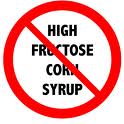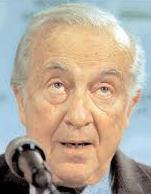|
The Atkins Diet Plan
The Atkins diet plan was developed by Dr. Robert Atkins in the early 1970’s. It is aimed primarily at weight loss and theorises that the ongoing obesity epidemic is a result of our love affair with carbohydrates. Therefore, it advocates a low carb diet, and of the low carb diets available it is probably the strictest. The Atkins diet may have been responsible for the low carb diet craze and the drop in sales of carbohydrate foods in America. Followers of the Atkins diet believe that saturated fat is not a contributor to heart disease and so the diet allows and encourages a much higher level of fat than most diets. The body usually burns glucose as fuel but it can switch to alternative sources of energy if need be. The Atkins diet plan, through the removal of most carbs, forces the body into a state of ketosis. In ketosis the body burns fat as an energy source. A number of celebrities, including Jennifer Aniston, Geri Halliwell, Kate Hudson and Bill Clinton have used the plan and continue to use it.
The Atkins diet plan came under attack by the scientific community from its inception. The American Medical Association, American Dieticians Association, American Cancer Association, American Heart Association, and the American Kidney Association amongst others still strongly oppose it. Mind you, none of them could be accused of improving human health either. After billions of dollars in donations the latter groups have not managed to make much dint in cancer, heart disease or kidney disease. It isn’t that complicated. Also dietitians have very little credibility when they are constantly on TV telling us of the health advantages of breakfast cereals that are 50% sugar.
Anecdotally, there seem to be many success stories with the Atkins diet plan and Atkins did the world a favour in pointing out the problem with the massive amount of junk carbohydrates we eat (especially high-fructose corn syrup). However,it seems that many people stop the diet within six months and some studies have shown that the weight loss over a year long period is minimal. I experimented with the Atkins diet 30 years ago but my recollection is dim. I think that although I didn’t feel hungry I found it a hard diet to maintain. I wasn’t trying to lose weight though. If you cannot sustain the diet for a lifetime then it is not much use for lifetime fitness but many people swear by it. Given the controversy surrounding the Atkins diet I suggest you look at Atkins Diet Plan success stories for the positive side and look here to get an alternative viewpoint. Robert Atkins died from a fall at the age of 72 but it appears that he was very overweight (clinically obese),had heart disease and hypertension (high blood pressure). Unfortunately, he did not epitomise health(see photo below) but he did challenge orthodoxy and get people to think outside the square.
If you would like to learn more about the diet before you start then you should read Dr Atkin's book which you can buy by clicking the image below. Good luck.
o what is involved in adopting the Atkins diet plan: There are four phases • In the induction phase you limit your carbohydrate intake to less than 20 grams per day and these come from green salads and other green vegetables. In this phase you can eat plenty of poultry, fish, shellfish, fowl, and eggs, butter, olive oil and vegetable oils. Even soft or semi-soft cheeses are permitted. This phase lasts for two weeks and will put you into ketosis. Drink lots of water. • The Ongoing Weight Loss (OWL) phase increases the carbohydrate level by 5 grams each day and then in the second week another 5 grams each day and in the third week it rises another 5 grams and so on. You are searching for the carb level that will sustain weight loss. Each week you will add one of these food categories to your diet The first week you will add any of the acceptable vegetables in larger quantities, then each week add a new food group in the following order: Fresh cheese, Nuts and seeds, Berries, Alcohol, Legumes, fruits, Starchy vegetables, Whole grains. You will follow this phase until you are within 10kg of your target weight. • The Pre-maintenance phase increases the daily carb allowance by 10 grams each week until you find a level that will not increase weight. As soon as your weight goes up, reduce carbs. • Lifetime maintenance phase. This phase should last theoretically for the rest of your life. You have reached your ideal weight and you will weigh yourself every week to ensure it stays there. Make a wider selection of food choices but be prepared to cut back on carbs if your weight increases.
As I mentioned earlier, Atkins died at the age of 72 from a fall but he was also clinically obese (at 258 pounds) and had heart disease and hypertension (high blood pressure). From the point of view of weight loss there are plenty of success stories but whether it is a good diet for the population in general is another story. It could be beneficial in the short-term especially if carbs are a problem for you. If you use it to lose weight and then change over to the zone diet or paleo-diet for the long-term it probably won't do you any damage. We need fats but probably not as abundantly as Atkins recommends. You have to remember that hunter-gatherers usually had a lean time of the year when there was not much fat about. It is my theory that this period probably removed any build up of plaque in the arteries. Today, we have constant access to fats with no lean time to remove the effects so we should either change our diet to low fat for a few months during the year or eat enough of the good fats to give us what we need but not so much as to cause heart disease. There are many success stories out there for the Atkins diet but do some reading before you embark so that you know what you are getting into. It may help with weight loss but is probably not the best choice for longevity and health.
|




